Jeonju, South Korea
April 9th – 10th 2011
Another comfortable 3 hours bus-ride took me from Busan to Jeonju. Jeonju is considered
I’ve read about people staying at night in a “jjimjilbang” (Korean saunas) so I wanted to experience it for myself. My guidebook recommended one of the oldest in Jeonju, a place called “Myeong Dong Sauna”. Upon arriving at the bus station, I took a short taxi ride to it. It wasn’t a fancy spa like the one in Busan, just an old building next to a Korean restaurant. I walked in and asked if I could stay the night. The lady in front couldn’t speak English so she picked up the phone and called someone. A few minutes later, a man showed up and he spoke pretty fluent English (!) and told me I could stay there and I could even go in/out at will (it’s not encouraged but since I’m a foreign traveler, they made an exception due to their Korean hospitality). One night for 5000 Won? You can’t do better than that.
“Joe” (or was it “Cho”?) was really friendly and accommodating, showing me around the place. Like any sauna/spa, there were lockers for shoes, then a separate area with lockers for personal belongings. My large backpack wouldn’t fit in there so they stored it in the office. Men walked in and out the shower/bath areas nude. The space upstairs was the common area with a large-screen TV and separate rooms for men and women, as well as a room where both men and women can sleep on the floors together.
It was 4:30 pm and I wasn’t ready to shower and sleep yet so I took a walk to see the Hanok Village, which was a popular spot with the tourists. It was about 15 minutes on foot and I had to get some directional help from people but it was straightforward enough. I visited several sites in the area, among them the “Gyeongijeon”, a “park like shrine area full of ornate buildings and beautiful trees” (per Rough Guide). The whole area was filled with Korean hanoks (traditional houses) so it added to the atmosphere. I visited a house producing “hanji” (traditional Korean paper) using the old traditional methods which looked rather repetitive and painstaking but a unique sight nonetheless.
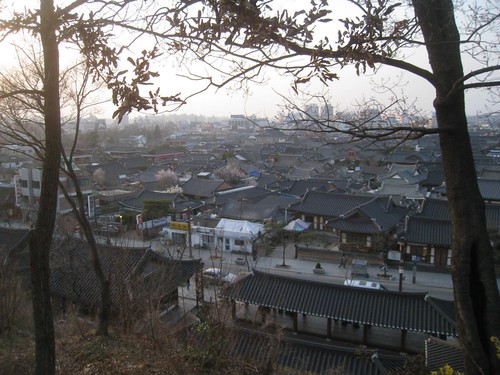
(A view of the Hanok village.)
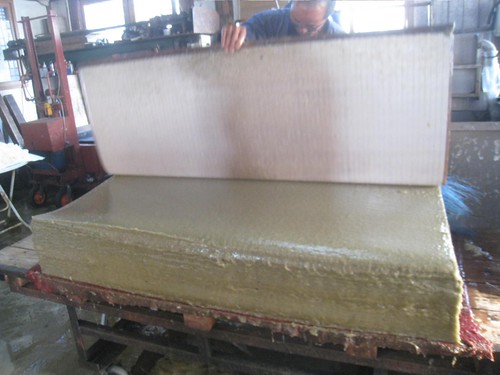
(Hanji-making.)
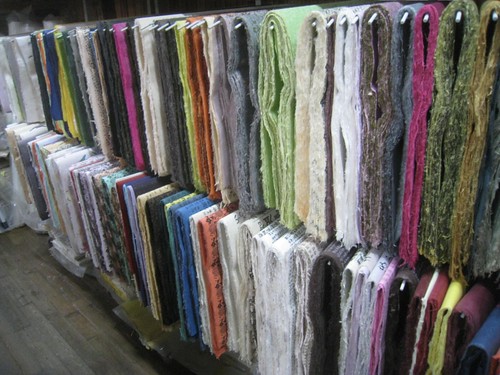
(Different-colored hanji.)
For dinner, I had Jeonju bibimbap which is supposedly different from regular bibimbap. I went to one of the more popular restaurants that served it. The presentation was different and some of the ingredients they added were unique but after you mix everything together, it doesn’t taste any different from the regular version. I’ve heard that only Korean taste-buds can discern the difference because they are subtle. I wasn’t completely blown away by it, especially for 10000 Won.
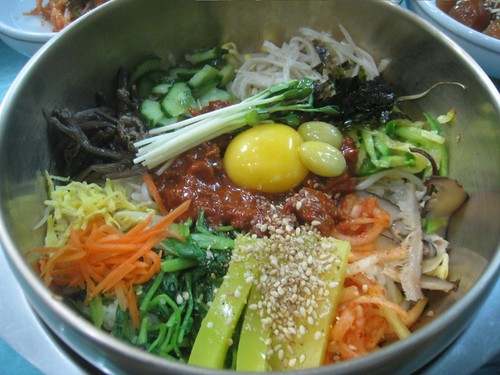
(Jeonju bibimbap.)
That night, I took a hot soak and showered, part of the perks staying in a sauna. Then I donned the provided grey t-shirt and orange shorts and walked upstairs to the common room, picked up a soft mat and small pillow, found a spot on the floor, read, and went to sleep. I woke up a few hours later and found more people lying all around me.
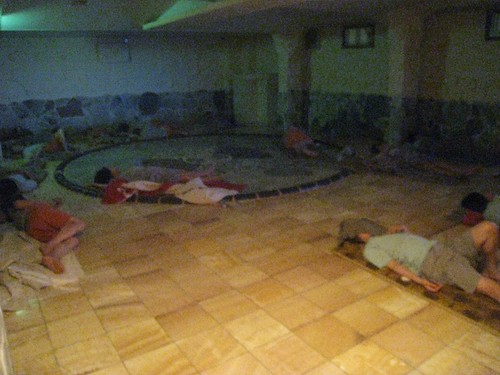
(Common room in jjimjilbang.)
The next day, I decided to pay another visit to the Hanok village to walk around some more as well as sample some other foods and snacks in the area, ranging from walnut cake (10 pieces, hot and sweet) to “seaweed galbitang” (seaweed and beef-ribs soup). I brought my book, found a quiet spot, enjoyed a bottle of “Mozu” (low-alcohol Jeonju rice wine), and read while occasionally lifting my head up to people-watch. For dinner, I had some “Kongnamul gukbap”, another Jeonju favorite, a bean-sprout filled broth with rice. A bit bland but cheap.
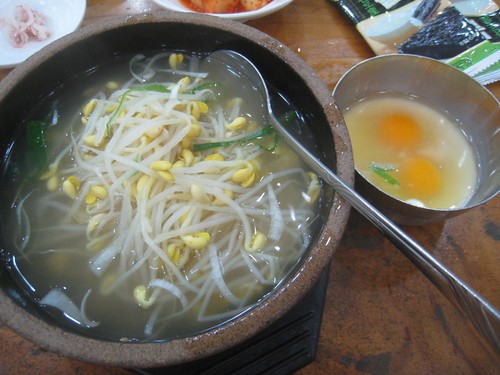
(Kongnamul gukbap.)

(Seaweed galbitang.)
I spent another night at the sauna and left the next morning back to Seoul.